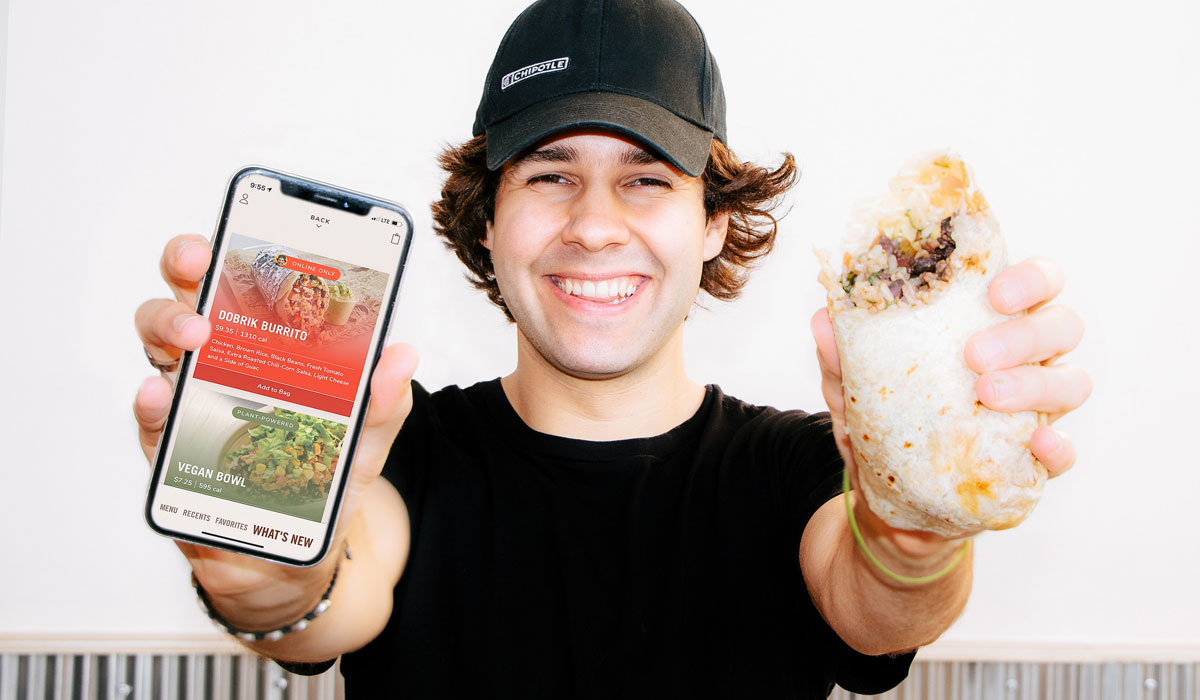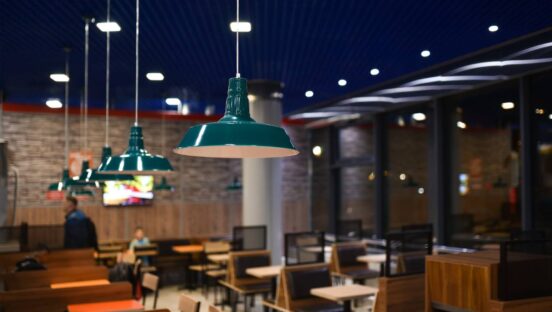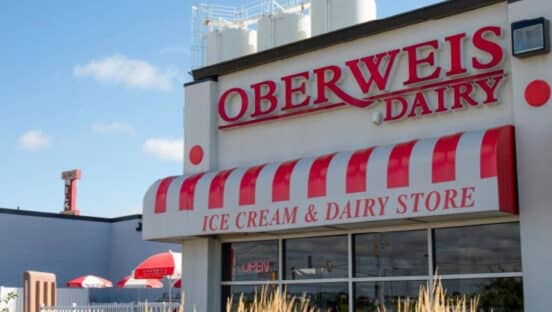While fresh CEO Brian Niccol admitted it’s going to take time to build a culture of accountability at Chipotle, the fast casual is wasting no time kicking its digital future into gear. Led by price hikes and queso add-ons, Chipotle’s same-store sales surged 3.3 percent in the second quarter, easily beating FactSet expectations of 2.7 percent—news that popped the brand’s stock 6 percent in pre-market trading Friday after a 5 percent-post market rise on Thursday afternoon. Revenue also lifted 8 percent to 2.4 billion thanks to the opening of 34 new restaurants.
Niccol, who joined Chipotle from Taco Bell in March, said the sales and restaurant-level margins in Q2 topped company expectations. But it was the digital progress that was the “real bright spot in the quarter.”
READ MORE: Chipotle to close stores in turnaround plan.
Chipotle’s annualized digital sales are currently about $500 million, and the chain believes this is just the early stage of a multibillion-dollar opportunity. The growth figures don’t dispute that.
Chipotle’s digital sales lifted 33 percent in Q2 and now account for 10.3 percent of sales, an eye-popping acceleration from 20 percent in the first quarter. Even more, Chipotle’s app and website now have 4 million active monthly users, which is a whopping 65 percent increase since the end of last year.
Delivery sales quadrupled in the quarter, Niccol added. Today, delivery is live in about 1,700 restaurants thanks to recent deals with Postmates and DoorDash, and Chipotle expects to widen the reach to 2,000 units by year’s end. Guest can also now order directly from Chipotle’s app, as executives hinted before.
Chipotle expanded delivery availability for catering to two-thirds of its restaurants in the quarter as well. A critical element in the operational performance of this segment, Niccol said, is Chipotle’s continued progress on digitizing its second make-lines, which are now in roughly 500 restaurants. The brand is targeting about 1,000 restaurants by year’s end, and plans to accelerate systemwide rollout by the end of 2019. “These digital second make-lines have a direct positive impact on the team member and guest experience,” Niccol said in a July 26 conference call, adding that digital pickup shelf tests in New York City are showing great promise.
“And based on the results to date, we will be expanding the test to a larger number of restaurants in several markets next month,” he added.
What’s intriguing for Chipotle is the reality that awareness around its delivery and digital programs remains relatively low. Niccol said more than 50 percent of customers still don’t realize Chipotle offers delivery.
“We will continue to make investments in our restaurants because a better experience for our team members directly translates to a better experience for our guests.” — Brian Niccol, Chipotle CEO.

“The delivery performance, not surprising right now, what we’re seeing is it really is impacted by how we promote it, because we’re in the early days of getting people to understand that it’s available,” Niccol said.
“… I think over time as we build awareness, build a habit, I think we’ll see this play a bigger and bigger role in getting us into an off-premises occasion.”
As for the Q2 performance, CFO John Hartung said the 4 percent rise in menu prices helped sales, and also didn’t hurt customer sentiment to any concerning degree. Customer resistance to the lift remains at or below 20 percent, he said. It was also lower than Q1 as Chipotle lapped the first increase from April of last year in about 20 percent of its restaurants. All of this led Chipotle to raise its full-year sales outlook to low- to mid-single digit comps increases, up from the low-single-digit percentage increase it forecasted earlier.
Chipotle’s profit fell 30 percent from the year-ago period to $46.9 million, or $1.68 per share, thanks to higher labor costs and restructuring expenses. Food costs at 32.6 percent represented a decrease of 150 basis points from the 34.1 percent in Q2 of last year. This was driven by the menu price increase and more favorable avocado prices, Chipotle said.
Updating its previously announced plan to close underperforming locations, Chipotle said about half of the 55–65 expected closures have taken place. During Q2, Chipotle closed five Pizzeria Locales in Kansas and Ohio, as well as three Chipotle units, including one relocation. On Thursday, the company said it shuttered 29 Chipotle restaurants. It expects to be at the lower end of its 130–150 new openings guidance set at the beginning of the fiscal calendar.
Chipotle’s overhaul is wide-ranging and focused on five areas, Niccol said: “Becoming a more culturally relevant and engaging brand that builds love and loyalty; digitizing and modernizing our restaurant experience to create a more convenient and enjoyable guest experience; running great restaurants with great hospitality and throughput; being disciplined and focused to enhance our powerful economic model; and building a great culture that can innovate and execute across digital, access, menu and the restaurant experience.”
Niccol said it’s too early to comment on menu changes, but the chain is just getting ready to use its stage-gate process to move a handful of initiatives from its NEXT Kitchen into an actual test market, where Chipotle can “really have true learnings of customer experience, team-member experience, and then how that plays out on total Chipotle performance.”
Niccol said Chipotle is doing a better job staffing its restaurants to match sales volume, and has lowered, year-over-year, its hourly turnover. It has also seen “a meaningful decline in guest complaints.”
“This tells us that we’ve made progress and that our guests are noticing the difference,” Niccol said. “We know that when the food is delicious, the feel of the restaurant is great, and we removed the friction from the flow of the order process, no matter the channel, we delight customers.”
Chipotle overhauled its training material several months again and has 75 percent of its field leaders through what it calls “Cultivate University,” an in-restaurant and in-classroom one-week training session launched in April. Chipotle is supplementing the platform with a new hospitality program in restaurants.
By October, Chipotle expects to have a digital version for mobile and tablets of its previously paper-based “owner’s path,” tool. This comprehensive review of restaurant performance equips field leaders with the ability to observe and focus on the critical details of delivering improved guest experience, Niccol said.
“In addition, the tool creates teaching moments for their general managers and documents that corrective actions are taken when needed,” he added.
Additionally, Chipotle is redesigning its forecasting and labor scheduling system to improve sales forecasting and to deliver the right amount of labor at the right time.
“In addition, our team members will have the ability to see their schedules remotely and swap shifts through mobile phones, taking these tasks out of the hands of the manager. We believe leveraging technologies such as this makes us a more desirable employer as we work to create a better experience for our crew members. We will continue to make investments in our restaurants because a better experience for our team members directly translates to a better experience for our guests,” Niccol said.








